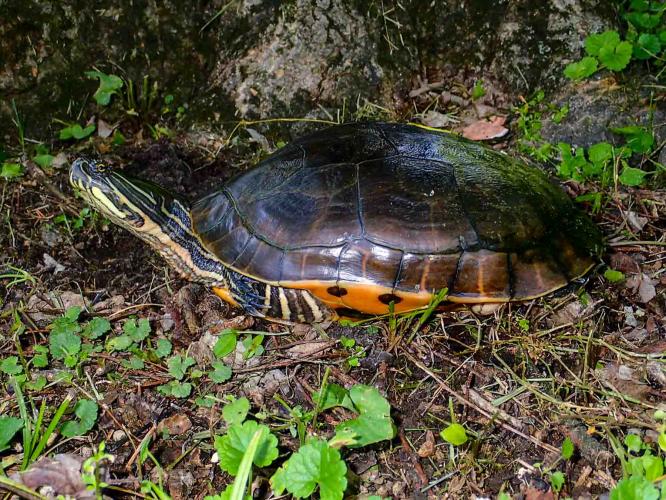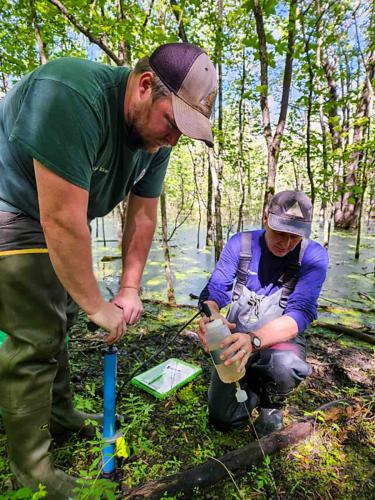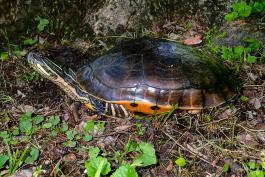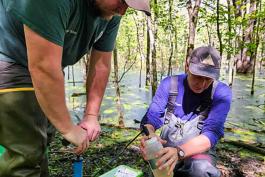Species of Conservation Concern
Looking for Western Chicken Turtles
Western chicken turtles are hard to find. Not only are they rare — state endangered in Missouri — but, unlike other turtles, they tend to avoid traps and are not motivated by bait.
Another challenge for finding them, says State Herpetologist Jeff Briggler, is “they’re only in the water for a short time. They spend most of their life on land beneath forest vegetation or leaf litter. In early spring, they travel to nearby wetlands to mate, forage, and feed, but only for a few months. Then they return to the forest.”
To boost the chances of locating chicken turtles, MDC has adopted a new tool — detecting the species through their environmental DNA (eDNA).
In spring when the turtles forage in wetlands, researchers collect water from potential chicken turtle habitat and process the water through filters to collect any skin and other cells the turtles may have shed. The filters are then mailed to a lab and tested for the species’ DNA.
“Because they’re so rare,” Briggler says, “if we get one or two positive hits, that’s a very big deal.”
If the species is detected, Briggler and staff return to the wetland and set up traps specially designed to catch chicken turtles. Trapping requires a lot of staff hours, so using eDNA to determine which locations are likely to have chicken turtles prevents wasted effort.
Captive breeding and other recovery efforts may be undertaken in the future, but, Briggler says, “first we need to better understand where the turtles are and learn more about their basic biology.”
The U.S. Fish and Wildlife Service is deciding whether western chicken turtles should be federally listed. Population surveys from Missouri and other states will help inform their decision.
At a Glance
Because western chicken turtles are so rare, researchers collect water to try to detect the species’ eDNA in wetlands. The water is processed in the field, using a bicycle pump to force the water through a filter. Animal cells and other tiny debris are captured by the filter, eventually causing it to clog. The filter is then removed, placed into a bag, frozen, and mailed to a lab for DNA testing.
Western chicken turtles are hard to find because:
- They are low in abundance.
- They live in isolated wetland areas.
- They spend only a few months per year in water.
- Most of their historical habitat is gone.
How You Can Help
If you see a western chicken turtle, take a photo and send it (along with the location) to Jeff.Briggler@mdc.mo.gov.




And More...
This Issue's Staff
Editor - Angie Daly Morfeld
Associate Editor - Larry Archer
Photography Editor - Cliff White
Staff Writer - Kristie Hilgedick
Staff Writer - Joe Jerek
Staff Writer – Dianne Van Dien
Designer - Shawn Carey
Designer - Marci Porter
Photographer - Noppadol Paothong
Photographer - David Stonner
Circulation – Marcia Hale






















